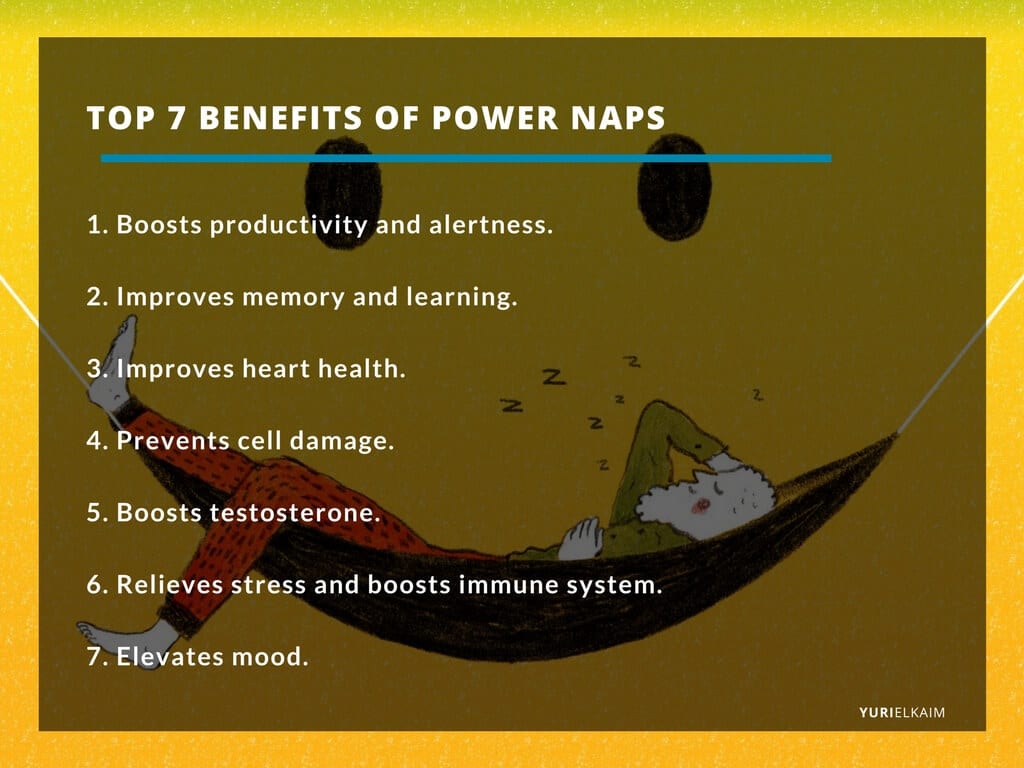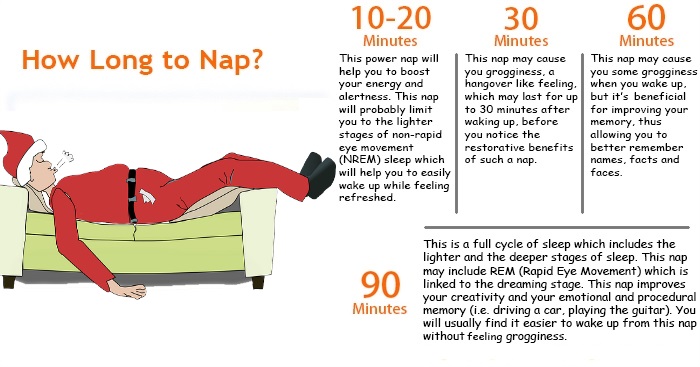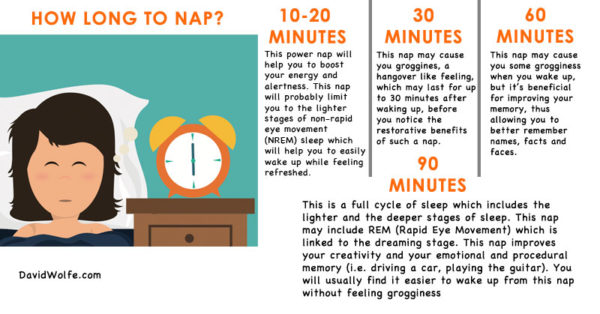The Science Behind Napping: Understanding the Benefits
Military power naps, also known as strategic napping, have been utilized by various military organizations to enhance the performance and alertness of their personnel during critical operations. These short naps, typically ranging from 15 to 30 minutes, have been shown to provide numerous cognitive and physiological benefits, making them an essential tool for individuals seeking to optimize their productivity and well-being.
One of the primary advantages of military power naps is the improvement in alertness and cognitive function. According to a study published in the journal Sleep, a 26-minute nap can significantly boost mental performance and sustain it for up to 3 hours, ensuring that individuals remain focused and productive throughout their daily tasks.
Moreover, military power naps have been linked to enhanced memory consolidation. During sleep, the brain processes and organizes newly acquired information, facilitating the formation of long-term memories. A study conducted by the University of California, San Diego revealed that participants who took a 60- to 90-minute nap after learning a new task demonstrated better recall and problem-solving abilities compared to those who stayed awake.
Additionally, military power naps have been shown to reduce stress and promote emotional regulation. A study published in the Journal of Clinical Endocrinology & Metabolism found that a 30-minute nap can lower cortisol levels, a hormone associated with stress, and improve mood. By incorporating power naps into their routines, individuals can better manage their stress and maintain emotional stability, even in high-pressure situations.
Lastly, military power naps have been associated with improved physical health. Research has indicated that regular napping can lower the risk of developing cardiovascular diseases, as well as reduce inflammation and oxidative stress. Furthermore, napping has been shown to bolster the immune system, enabling the body to better combat infections and illnesses.
In conclusion, military power naps offer a myriad of benefits, including increased alertness, improved memory, enhanced emotional regulation, and better physical health. By understanding the science behind napping and incorporating power naps into their daily routines, individuals can significantly improve their overall well-being and performance.
Military Power Naps: History and Origins
The concept of military power naps can be traced back to various military forces throughout history, where soldiers and officers have utilized strategic napping to maintain peak performance during extended periods of combat or vigilance. One of the earliest recorded instances of military napping dates back to the ancient Roman Empire, where centurions were known to take short naps during guard duty, a practice known as “centurion’s rest.”
In more recent history, military power naps gained prominence during World War II, when the United States military implemented a program known as “briefing naps” for its pilots. These 20- to 30-minute naps, taken before or between missions, were designed to enhance alertness and cognitive function, ensuring that pilots remained at the top of their game during high-stress, high-stakes operations. The success of this program led to the widespread adoption of military power naps by other military forces around the world.
Beyond their military applications, military power naps have been increasingly integrated into civilian life as a means of improving productivity and overall well-being. The term “power nap” was popularized in the 1990s by Dr. Sara Mednick, a sleep researcher at the University of California, San Diego, who conducted extensive studies on the benefits of short naps. Her work, along with that of other sleep experts, has contributed to the growing recognition of military power naps as a valuable tool for managing sleep debt and enhancing cognitive performance.
Today, military power naps are utilized by a diverse range of individuals, from high-performing professionals seeking to maximize their productivity to students looking to improve their memory and learning capabilities. By understanding the historical significance and origins of military power naps, individuals can better appreciate the value of this powerful napping technique and harness its potential to improve their daily lives.
How to Master Military Power Naps: Techniques and Tips
Military power naps can be a powerful tool for enhancing alertness, cognitive function, and overall well-being. However, mastering this napping technique requires practice and dedication. By following these practical tips and techniques, individuals can optimize their military power nap experience and reap the full benefits of this unique napping method.
1. Create the Ideal Environment
To maximize the effectiveness of military power naps, it is essential to create a conducive environment that promotes relaxation and minimizes distractions. This may include finding a quiet, dimly lit space, using earplugs or noise-cancelling headphones, and utilizing a comfortable pillow or sleep mask. By controlling external factors, individuals can create an environment that encourages deep, restorative sleep during their power naps.
2. Establish a Consistent Schedule
Consistency is key when it comes to mastering military power naps. By adhering to a regular napping schedule, individuals can train their bodies to enter a state of deep relaxation quickly and efficiently. This may involve setting aside specific times during the day, such as mid-morning or late afternoon, to ensure that power naps do not interfere with nighttime sleep patterns.
3. Use Relaxation Techniques
Relaxation techniques, such as deep breathing exercises, progressive muscle relaxation, or guided imagery, can help individuals enter a state of deep relaxation during their military power naps. By incorporating these techniques into their napping routine, individuals can enhance the restorative benefits of their power naps and improve their overall sleep quality.
4. Limit Nap Duration
Military power naps are typically short, ranging from 15 to 30 minutes, to minimize the risk of entering deeper stages of sleep that may cause grogginess upon waking. By setting a timer or using a napping app, individuals can ensure that their power naps remain within the recommended duration, allowing them to reap the benefits of increased alertness and cognitive function without experiencing the negative effects of oversleeping.
5. Gradually Increase Nap Frequency
For those new to military power naps, it is essential to gradually increase nap frequency to allow the body to adjust to this new sleep pattern. By starting with one or two power naps per week and gradually increasing the frequency over time, individuals can minimize the risk of disrupting their nighttime sleep patterns and ensure a smooth transition to a more balanced sleep schedule.
In conclusion, mastering military power naps requires practice, dedication, and an understanding of the techniques and tips that can optimize the napping experience. By creating the ideal environment, establishing a consistent schedule, using relaxation techniques, limiting nap duration, and gradually increasing nap frequency, individuals can harness the power of military power naps to enhance their overall well-being and performance.
Debunking Myths: Separating Fact from Fiction
Despite the numerous benefits of military power naps, there are several misconceptions surrounding this unique napping technique. By addressing these common myths and providing evidence-based rebuttals, individuals can better understand the true potential of military power naps and integrate them into their daily routines without fear of negative consequences.
Myth 1: Napping Will Interfere with Nighttime Sleep
One of the most pervasive myths about military power naps is that they will interfere with nighttime sleep patterns, leading to insomnia or other sleep disorders. However, research has shown that short naps, when taken at appropriate times during the day, can actually improve nighttime sleep quality and duration. By adhering to a consistent napping schedule and limiting nap duration, individuals can minimize the risk of disrupting their nighttime sleep patterns and enjoy the benefits of increased alertness and cognitive function during the day.
Myth 2: Napping Causes Grogginess
Another common misconception about military power naps is that they will cause grogginess or disorientation upon waking. While this is a risk associated with longer naps or deeper stages of sleep, short power naps, when taken correctly, can actually enhance alertness and reduce feelings of fatigue. By setting a timer or using a napping app to ensure that power naps remain within the recommended duration, individuals can minimize the risk of experiencing grogginess or disorientation upon waking.
Myth 3: Napping is Only for Those Who Are Sleep Deprived
While military power naps can be an effective tool for managing sleep debt and combating the effects of sleep deprivation, they are not exclusively reserved for those who are sleep-deprived. In fact, regular napping has been shown to improve cognitive function, memory, and overall well-being in individuals who are not sleep-deprived. By incorporating military power naps into their daily routines, even well-rested individuals can enhance their performance and productivity, both at work and in their personal lives.
Myth 4: Napping is a Sign of Weakness
Finally, there is a widespread belief that napping is a sign of laziness or weakness, rather than a proactive strategy for managing sleep and enhancing performance. However, this could not be further from the truth. Military power naps have been utilized by high-performing individuals, from soldiers to CEOs, as a means of optimizing their sleep patterns and maximizing their productivity. By embracing the power of napping and incorporating military power naps into their daily routines, individuals can demonstrate their commitment to self-care, productivity, and overall well-being.
In conclusion, debunking these common myths surrounding military power naps is essential for individuals to fully understand and appreciate the true potential of this unique napping technique. By addressing misconceptions about napping, such as the idea that napping will interfere with nighttime sleep or cause grogginess, and providing evidence-based rebuttals, individuals can make informed decisions about incorporating military power naps into their daily routines and enjoy the numerous benefits of increased alertness, improved memory, and enhanced cognitive function.
Military Power Nap Equipment: Gadgets and Accessories
To optimize the military power nap experience, various products and accessories have been developed to enhance relaxation, minimize distractions, and promote deep, restorative sleep. By incorporating these gadgets and accessories into their napping routine, individuals can create an environment that supports their sleep goals and maximizes the benefits of military power naps.
1. Sleep Masks
Sleep masks are a simple yet effective tool for blocking out light and creating a dark, soothing environment during military power naps. By eliminating visual distractions, sleep masks can help individuals enter a state of deep relaxation more quickly, allowing them to make the most of their short napping periods.
2. Noise-Cancelling Headphones
Noise-cancelling headphones are another essential piece of equipment for mastering military power naps. By neutralizing background noise and distractions, noise-cancelling headphones can help individuals create a quiet, peaceful environment that supports deep, restorative sleep. Additionally, these headphones can be used in conjunction with soothing sounds, such as white noise or nature sounds, to further enhance the napping experience.
3. Specialized Pillows
Specialized pillows, designed specifically for napping, can provide the necessary support and comfort for military power naps. These pillows, which come in a variety of shapes and sizes, are designed to promote proper spinal alignment and reduce pressure points, allowing individuals to enjoy a restful, rejuvenating nap, even in a limited time frame.
4. Napping Apps
Napping apps, available for both smartphones and smartwatches, can help individuals optimize their military power naps by providing guided relaxation techniques, setting nap timers, and tracking sleep patterns. By incorporating these apps into their napping routine, individuals can ensure that their power naps remain within the recommended duration, allowing them to reap the benefits of increased alertness and cognitive function without experiencing the negative effects of oversleeping.
5. Portable Nap Beds
For those who need to take military power naps on the go, portable nap beds offer a convenient and comfortable solution. These compact, lightweight beds can be easily transported and set up in a variety of locations, providing a comfortable and supportive surface for napping, even in the absence of a traditional bed or couch.
In conclusion, by incorporating these gadgets and accessories into their napping routine, individuals can create an environment that supports their sleep goals and maximizes the benefits of military power naps. From sleep masks and noise-cancelling headphones to specialized pillows and portable nap beds, these products can help individuals optimize their napping experience and enjoy the numerous advantages of increased alertness, improved memory, and enhanced cognitive function.
Incorporating Power Naps into Your Daily Routine
Integrating military power naps into daily routines can provide numerous benefits for busy professionals, students, and parents. By finding creative and efficient ways to incorporate these short, restorative naps into their schedules, individuals can enhance their alertness, improve their memory, and boost their cognitive function, all while maintaining a balanced and healthy sleep routine.
1. Prioritize Napping
To successfully incorporate military power naps into daily routines, it is essential to prioritize napping and make it a non-negotiable part of the daily schedule. By setting aside dedicated time for napping, individuals can ensure that they have the opportunity to reap the benefits of these short, restorative periods of sleep.
2. Identify Ideal Nap Times
Identifying the ideal nap times is another crucial step in incorporating military power naps into daily routines. For most individuals, the optimal nap time is between 1:00 PM and 3:00 PM, as this aligns with the body’s natural circadian rhythms and allows for maximum rest and rejuvenation.
3. Create a Nap-Friendly Environment
Creating a nap-friendly environment is essential for successfully incorporating military power naps into daily routines. This may involve finding a quiet, comfortable space, using relaxation techniques, such as deep breathing or progressive muscle relaxation, and utilizing gadgets and accessories, such as sleep masks and noise-cancelling headphones, to enhance the napping experience.
4. Balance Napping with Nighttime Sleep
Balancing napping with nighttime sleep is crucial for maintaining a healthy and balanced sleep routine. By determining the optimal duration and frequency of naps, individuals can ensure that their military power naps complement their nighttime sleep patterns and provide the necessary rest and rejuvenation without interfering with nighttime sleep quality or duration.
5. Incorporate Napping into Daily Activities
Finally, incorporating napping into daily activities can help individuals make the most of their time and ensure that they have the opportunity to enjoy the benefits of military power naps. This may involve taking naps during lunch breaks, incorporating naps into study or work sessions, or scheduling naps before or after exercise or other daily activities.
In conclusion, by prioritizing napping, identifying ideal nap times, creating a nap-friendly environment, balancing napping with nighttime sleep, and incorporating napping into daily activities, individuals can successfully integrate military power naps into their daily routines and enjoy the numerous benefits of increased alertness, improved memory, and enhanced cognitive function.
Balancing Power Naps and Nighttime Sleep: Finding the Right Balance
Balancing military power naps with nighttime sleep is crucial for maintaining a healthy and balanced sleep routine. By understanding the optimal duration and frequency of naps, individuals can ensure that their power naps complement their nighttime sleep patterns and provide the necessary rest and rejuvenation without interfering with nighttime sleep quality or duration.
1. Determine the Optimal Nap Duration
The optimal nap duration for military power naps is typically between 15 and 30 minutes. This allows individuals to enter the first stage of sleep, known as the light sleep stage, and reap the benefits of increased alertness, improved memory, and enhanced cognitive function, without experiencing the negative effects of oversleeping, such as grogginess or disorientation.
2. Establish a Nap Schedule
Establishing a nap schedule is another essential step in finding the right balance between power naps and nighttime sleep. By setting aside dedicated time for napping and adhering to a consistent schedule, individuals can ensure that their power naps do not interfere with their nighttime sleep patterns and provide the necessary rest and rejuvenation without disrupting their sleep routine.
3. Monitor Sleep Quality and Duration
Monitoring sleep quality and duration is crucial for maintaining a healthy and balanced sleep routine. By tracking their sleep patterns, individuals can determine the optimal duration and frequency of their power naps and ensure that they are complementing, rather than interfering with, their nighttime sleep patterns.
4. Adjust Nap Duration and Frequency as Needed
Adjusting nap duration and frequency as needed is essential for maintaining a healthy and balanced sleep routine. By making adjustments based on their sleep patterns and individual needs, individuals can ensure that their military power naps provide the necessary rest and rejuvenation without interfering with their nighttime sleep quality or duration.
5. Prioritize Nighttime Sleep
Finally, prioritizing nighttime sleep is crucial for maintaining a healthy and balanced sleep routine. By ensuring that they are getting the recommended 7-9 hours of nighttime sleep each night, individuals can complement their military power naps and enjoy the numerous benefits of increased alertness, improved memory, and enhanced cognitive function, all while maintaining a healthy and balanced sleep routine.
In conclusion, by determining the optimal nap duration, establishing a nap schedule, monitoring sleep quality and duration, adjusting nap duration and frequency as needed, and prioritizing nighttime sleep, individuals can successfully balance military power naps with nighttime sleep and enjoy the numerous benefits of increased alertness, improved memory, and enhanced cognitive function, all while maintaining a healthy and balanced sleep routine.
The Future of Napping: Research and Innovations
Recent research and innovations in the field of napping have led to the development of smart napping technologies and the exploration of new applications for military power naps in fields such as healthcare and education. By examining these advancements, individuals can gain a better understanding of the potential benefits and applications of military power naps and how they can be integrated into daily routines to enhance alertness, improve memory, and boost cognitive function.
1. Smart Napping Technologies
Smart napping technologies, such as nap pods and smartphone apps, have revolutionized the way individuals approach napping. These technologies provide a convenient and efficient way to incorporate military power naps into daily routines, offering features such as guided relaxation techniques, sleep tracking, and customizable nap durations.
2. Applications in Healthcare
Exploration of new applications for military power naps in healthcare has led to the development of innovative therapies and treatments for a variety of conditions, including sleep disorders, chronic fatigue, and stress-related disorders. By incorporating military power naps into healthcare practices, individuals can enjoy the numerous benefits of increased alertness, improved memory, and enhanced cognitive function, all while maintaining a healthy and balanced sleep routine.
3. Applications in Education
The exploration of new applications for military power naps in education has led to the development of innovative teaching methods and learning strategies that incorporate napping as a means of enhancing alertness, improving memory, and boosting cognitive function. By incorporating military power naps into educational practices, students can enjoy the numerous benefits of increased alertness, improved memory, and enhanced cognitive function, all while maintaining a healthy and balanced sleep routine.
4. Future Directions
As research and innovations in the field of napping continue to advance, individuals can expect to see the development of new technologies, therapies, and applications for military power naps. By staying informed about these advancements, individuals can make informed decisions about incorporating military power naps into their daily routines and enjoy the numerous benefits of increased alertness, improved memory, and enhanced cognitive function.
In conclusion, recent research and innovations in the field of napping have led to the development of smart napping technologies and the exploration of new applications for military power naps in fields such as healthcare and education. By examining these advancements, individuals can gain a better understanding of the potential benefits and applications of military power naps and how they can be integrated into daily routines to enhance alertness, improve memory, and boost cognitive function.







